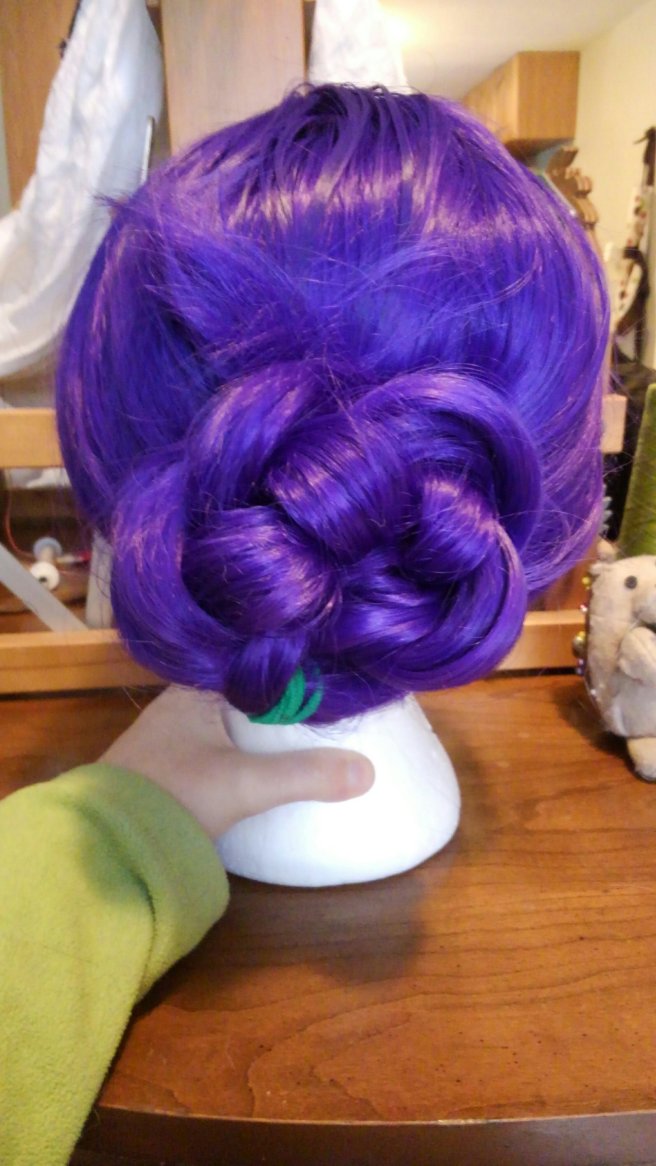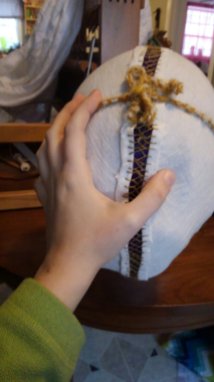Alright, this is basically a rant with a how to buried in it.
Hats. Cover your head. If you’re doing Medieval, Pre-Medieval, all the way up to Victorian, recreation and your persona is in what they would consider to be public? Wear a hat. We don’t wear them modernly (except in special situations), and they’re entirely optional. So we tend to just…not, even when in persona. Please don’t fall into this trap.
No this is not a religious thing. I mean, yeah it can be. I do Saxon and it’s totally a religious thing by that point. Modesty before the Divine and all that. Frankly it’s just practical before it becomes a symbol of modesty. So all this “but my persona isn’t Christian so I can leave my hair uncovered!” misses the point.
Why you should cover your head, regardless of gender or religious choices:
- Sanitation.
Ok look, hair gets dirty. If you work outside in any capacity it gets muddy, and full of just random stuff. A head covering keeps all that off your hair, keeping it neater between washing.
2. Climate control/Burn prevention
I’m putting these together because they fall into the same basic category of comfort. Sun or wind burn on your scalp suuuuucks. The easiest way to prevent this? A thin layer of cloth over your head. Also, shockingly enough, a linen veil or cap is cooler than a bare head in extreme heat. That’s without factoring in that you could wet it with cool water and it becomes basically air conditioning. In the cold? An uncovered head is a heat dump. We know this, this is why we wear knit caps and hoods in modern winter. If you portray Northern Europe in the little ice age? A hat means you don’t get frost bitten ears.
3. Personal grooming
Pop quiz: if you have long hair and don’t use product in it to keep it in place, how often do you shove it out of your face every day? How many times do you tuck fly-aways behind your ears? Even if you tightly braid it. If you’re anything like me it’s frequent and unthinking. Know when that problem goes away? When there’s a cap or veil keeping it covered and in place. No more wind blowing long hair into your eyes, no lighting your head on fire trying to make dinner, no eating the tips of your hair while talking.
So what would you wear on your head?
I’m a Saxon, so I’m going to use my nifty new dummy head and purple wig to show you the layers I do and why.
Layer 1: Hair style
I do this braid/bun style because it uses one tie, gets all my hair, was found on a bog body, and fits neatly under all the other layers. Why is it purple here? Because I own three wigs, and the green and rainbow ones are curly so I’m not braiding them.

Layer 2: Cap
This is optional-ish. Think of it like a hair bra. This gives me something to pin the final veil to and keeps my hair firmly contained. This is a fairly new addition to my garb and I have no idea why it took so long for me to start wearing it. It’s comfortable enough that I don’t notice it once it’s on.
Layer 3: Fillet
Totally optional. This is for form rather than function. Saxon tends to not be very flashy (see my comment in the beginning about modesty and all that). But this does give a chance for a nice pop of color and pattern, and the ability to show off your fancy tablet weaving. I’ve also noticed it helps keep my cap from sliding back if I tie it around my head (above) rather than under my chin.
Layer 4: Veil
Final layer! This is the most visible part. It covers my neck and shoulders, and keeps me from getting sun burn, no matter how long I spend outside. I actually wore only a veil for years and just pinned it to the front of my dress, looped it over the top of my head, and then pinned it to itself. That certainly works and is an entirely viable way of wearing a veil if you can’t wear the foundation cap for whatever reason (or if you forgot it). But wearing a veil this way is what gives veils like this their pain the butt reputation. They tend to slip back, or shift, and hair escapes, and your forever fiddling with it and adjusting it. And it can sometimes, annoyingly, just slip right off the back and then you’re getting stabbed in the throat with your own pins trying to fix it. As me how I know.







*applauds* This is one of my pet peeves too, and it’s /such/ a widespread thing, since it can crop up in so many eras. Your method shows hair at the front and I was wondering if that was just from wrestling with the wig and everything, or if you do it intentionally based on some source or other? I know Owen-Crocker mentions the one Madonna and Child where there’s what might be a braid over her forehead. . .
Also a cap is really handy, especially if you’ve got bangs or are growing bangs out (sez I, from experience).
LikeLike
The hair in front is from wrestling with a cheap synthetic wig that is Not A Lace Front. So trying to brush it back fully into the cap just was not happening. It’s also a bit bulkier than my own natural hair. My fillet sits right along my hairline where my cap stops.
LikeLike
Really appreciated your breakdown of head coverings. Could you elaborate more on how you actually drape your veil? What are its dimensions?
LikeLike
The veil shown here is roughly 1 yard square of handkerchief weight linen. I also use a heavier linen veil that’s roughly 18in by a yard. Draping depends on which veil I’m using.
The larger one gets the front edge centered and pinned to the cap, with the front corners then get crossed in front of my throat, tucked up to the opposite ear from where they started, and pinned to the cap at roughly my temple. Think how the cap tie crosses under my chin to tie at the back of the head in that photo set.
The smaller one has the front edge pinned to the cap where 1/3 drapes over one side of my head, and the other 2/3 off the other side. The shorter end is tucked across my throat and pinned, much like in the first veil draping I just described. The longer end then wraps to the front around my throat, continues until it goes all the way around my neck, then gets pinned up on the same side it started on.
LikeLike